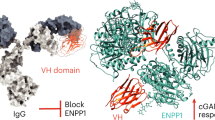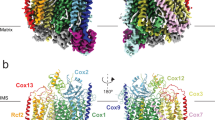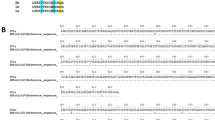Abstract
The chicken winged helix proteins, CWH-1, CWH-2 and CWH-3, were isolated and identified by homology cloning using the winged helix sequence of the retroviral oncogene qin as a probe. The CWH proteins act as growth stimulators in chicken embryo fibroblasts and in this activity resemble the Qin protein. Qin is a transcriptional regulator that functions as a repressor, and its oncogenic potential is correlated with the ability to repress transcription. In this communication we show that CWH proteins are localized in the cell nucleus, recognize the Qin DNA binding site and also function as transcriptional repressors. The repression activity of CWH-3 was mapped to the region of amino acids 211 to 311, a domain that is homologous to the major repression domain of Qin.
This is a preview of subscription content, access via your institution
Access options
Subscribe to this journal
Receive 50 print issues and online access
$259.00 per year
only $5.18 per issue
Buy this article
- Purchase on SpringerLink
- Instant access to full article PDF
Prices may be subject to local taxes which are calculated during checkout
Similar content being viewed by others
Author information
Authors and Affiliations
Rights and permissions
About this article
Cite this article
Freyaldenhoven, B., Freyaldenhoven, M., Iacovoni, J. et al. Avian winged helix proteins CWH-1, CWH-2 and CWH-3 repress transcription from Qin binding sites. Oncogene 15, 483–488 (1997). https://doi.org/10.1038/sj.onc.1201189
Received:
Revised:
Accepted:
Issue date:
DOI: https://doi.org/10.1038/sj.onc.1201189
Keywords
This article is cited by
-
Characterization of flounder (Paralichthys olivaceus) FoxD3 and its function in regulating myogenic regulatory factors
In Vitro Cellular & Developmental Biology - Animal (2011)
-
Prevalence of the EH1 Groucho interaction motif in the metazoan Fox family of transcriptional regulators
BMC Genomics (2007)



